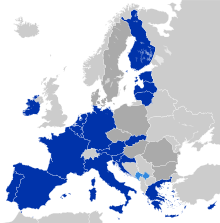This article has multiple issues. Please help improve it or discuss these issues on the talk page . (Learn how and when to remove these messages)
|

Euro proof sets are proof sets of the coins of the Euro. Proof coins were originally coins minted to test the dies used in the coin minting process and to archive sets of coins minted every year. Modern proof sets are minted in higher numbers and are sold to the public and numismatists for collecting. Modern proof coins are often minted using special processes in order to make the coins more aesthetically pleasing. Mints in countries in the European Union who use the Euro often make proof sets of the upcoming year's Euro coins. Sets from these countries are listed below.






